Zesty Tropical Strawberry Mango Smoothie Recipe for Summer
Blending a tropical strawberry mango smoothie brings instant sunshine to your morning routine.
Summer vibes burst through this refreshing drink’s vibrant colors and luscious flavors.
Ripe strawberries and sweet mangoes create a perfect tropical harmony in just minutes.
Creamy textures and natural sweetness dance together without added sugars or complicated techniques.
Each sip transports you to a beachside paradise with minimal effort.
Cool and nutritious, this smoothie promises a delightful escape from ordinary beverages.
Reasons To Love Tropical Strawberry Mango Smoothie
Strawberry Mango Smoothie Base Components
Fresh Fruits:Dairy and Liquid Base:Flavor Enhancers:Tropical Strawberry Mango Smoothie Steps
Step 1: Gather Vibrant Smoothie Ingredients
You’ll need fresh strawberries, ripe mangoes, creamy yogurt, honey, ice cubes, and a splash of milk.
Select the most colorful and fragrant fruits for a delightful tropical experience.
Step 2: Prepare Fresh Fruits
Ensure your fruits are clean and ready for blending.
Step 3: Load Blender with Tropical Goodness
Arrange ingredients strategically for optimal blending.
Step 4: Blend Into Smooth Perfection
Secure blender lid and start blending on high speed.
Pulse and blend until the mixture transforms into a silky, creamy consistency with no fruit chunks remaining.
Step 5: Taste and Customize
Sample your smoothie and adjust sweetness by adding more honey if desired.
If the texture seems too thick, introduce a little more milk to achieve your preferred consistency.
Step 6: Serve Chilled and Vibrant
Pour the smoothie into tall glasses.
Garnish with a strawberry slice or mango wedge if you want an extra touch of tropical flair.
Serve immediately for maximum freshness and flavor.
Strawberry Mango Smoothies With Tropical Blending Techniques
Store Mango Smoothie And Reblend Before Serving
Smooth Matches for Tropical Strawberry Mango Smoothie
Strawberry Mango Smoothie with Tropical Blends
FAQs
Yes, frozen strawberries and mangoes work great and make the smoothie extra thick and cold without needing ice.
Simply replace yogurt with dairy-free alternatives like coconut yogurt or skip it entirely, using plant-based milk instead.
Add a scoop of protein powder, a handful of spinach, chia seeds, or a tablespoon of almond butter to increase protein and nutrients.
The smoothie is low in calories, high in vitamins, and contains natural sugars that can help control hunger and provide energy.
Print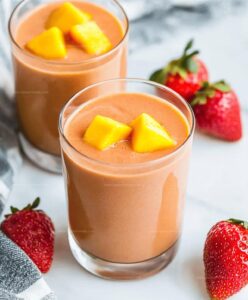
Tropical Strawberry Mango Smoothie Recipe
- Total Time: 5 minutes
- Yield: 2 1x
Description
Summer’s paradise meets blissful refreshment in this Tropical Strawberry Mango Smoothie, blending luscious fruits into a cool, silky escape. Creamy waves of sweet mango and ripe strawberries will transport you to a beachside retreat with each sip.
Ingredients
Main Fruits:
- 1 cup frozen strawberries
- 1 cup frozen mango chunks
- 1 banana
Dairy and Liquid Base:
- 1/2 cup Greek yogurt
- 1 cup coconut milk (or almond milk)
Flavor Enhancers:
- 1 tablespoon honey (optional)
- 1/2 teaspoon vanilla extract
- Ice cubes (optional)
Instructions
- Gather ripe strawberries, fresh mango chunks, yogurt, milk, and honey in your blender, ensuring all ingredients are chilled for optimal smoothness.
- Pulse the ingredients initially to break down larger fruit pieces, creating a preliminary blend.
- Increase blender speed to high, processing for 45-60 seconds until the mixture transforms into a velvety, uniform consistency with no visible fruit chunks.
- Evaluate the smoothie’s flavor profile, carefully adding additional honey if a sweeter taste is desired, or a splash of milk to adjust thickness.
- Transfer the vibrant tropical mixture into tall glasses, allowing the rich colors to showcase the fresh fruit’s natural beauty.
- Garnish with a small strawberry slice or mango wedge on the glass rim for an elegant presentation, and serve immediately to preserve the smoothie’s optimal temperature and texture.
Notes
- Check fruit ripeness to maximize natural sweetness without extra sugar.
- Frozen fruits create a thicker, more refreshing smoothie texture and eliminate need for ice.
- Experiment with plant-based milk alternatives like almond or coconut milk for different flavor profiles and dietary needs.
- Add a small handful of spinach for hidden nutrition without altering the vibrant tropical taste.
- Prep Time: 5 minutes
- Cook Time: 0 minutes
- Category: Smoothie
- Method: Blending
- Cuisine: American
Nutrition
- Serving Size: 2
- Calories: 220
- Sugar: 28g
- Sodium: 75mg
- Fat: 7g
- Saturated Fat: 5g
- Unsaturated Fat: 2g
- Trans Fat: 0g
- Carbohydrates: 42g
- Fiber: 4g
- Protein: 6g
- Cholesterol: 10mg

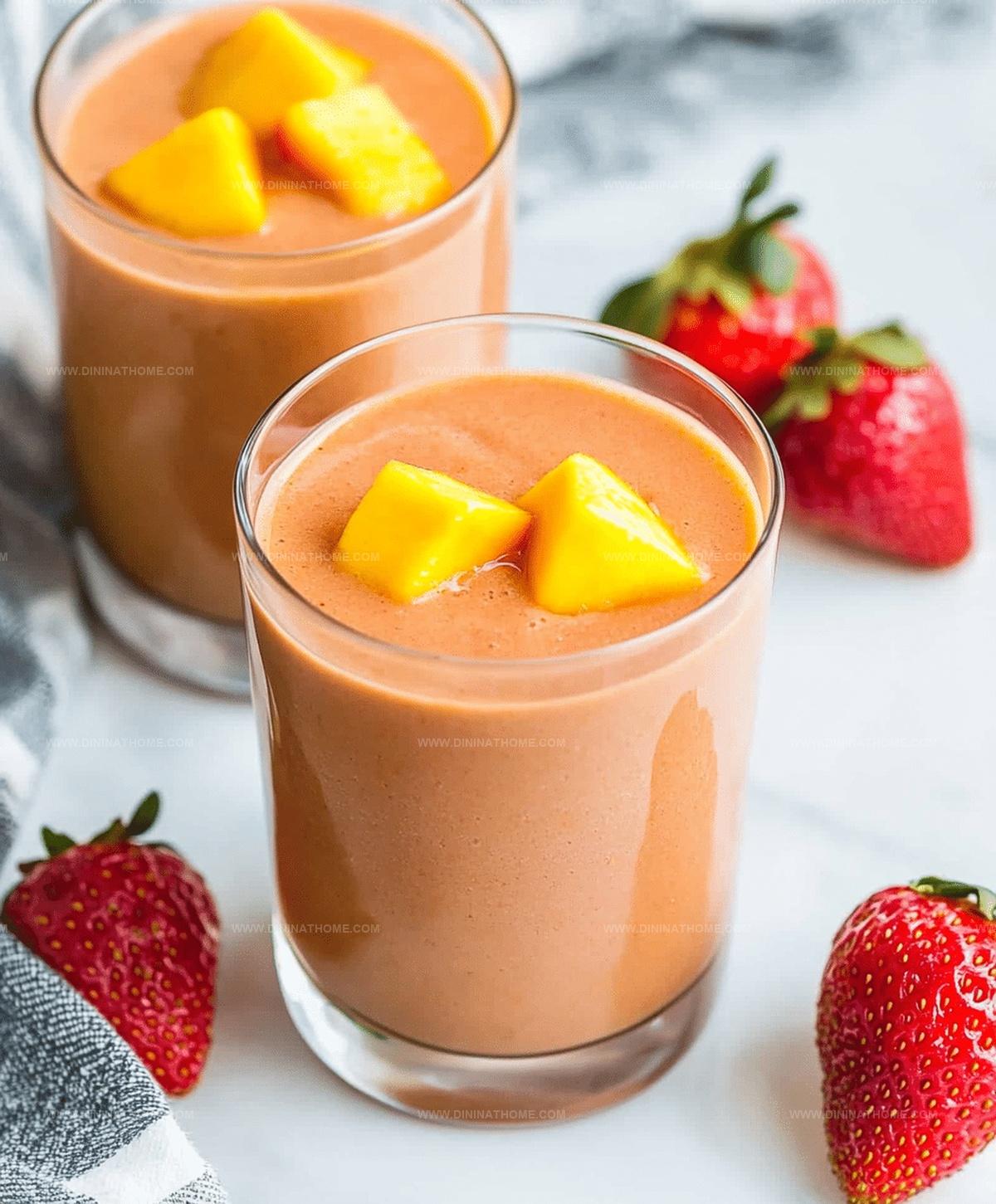
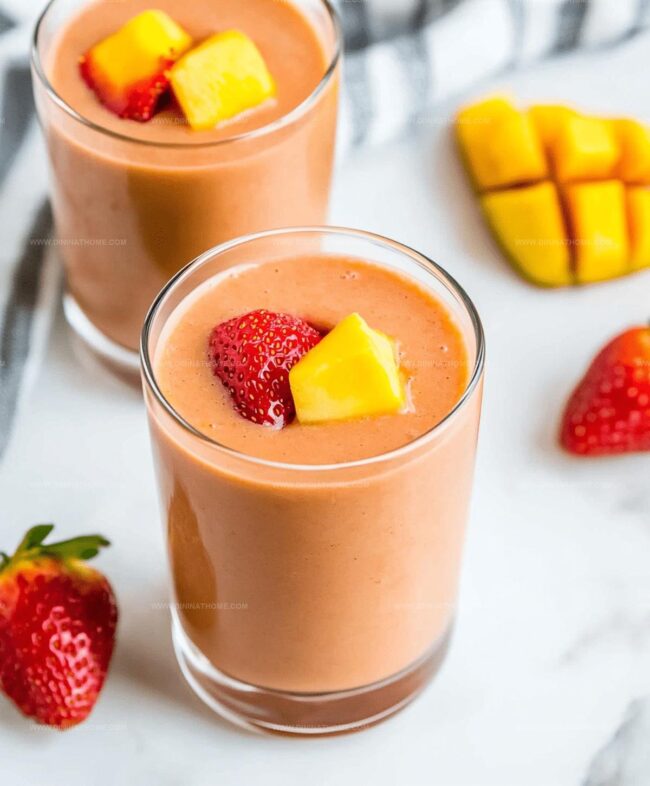
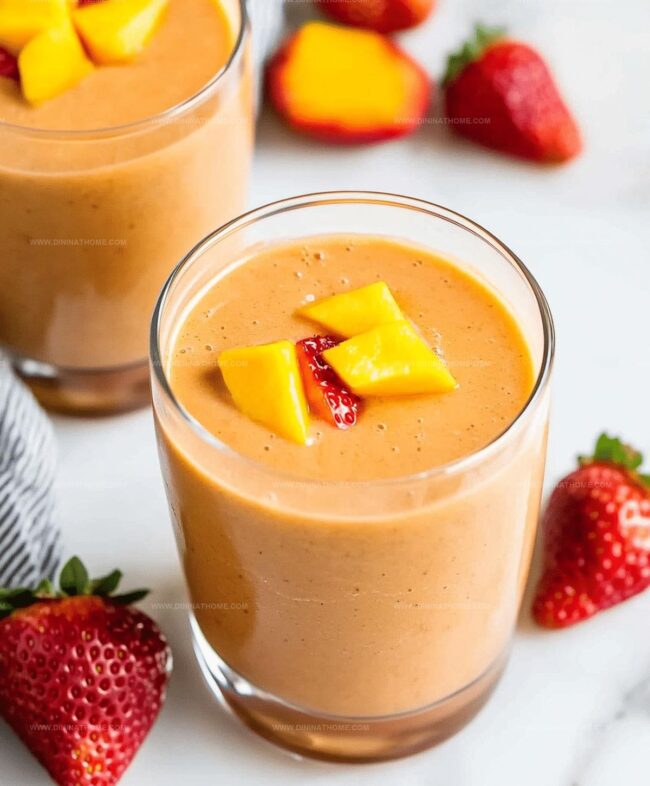
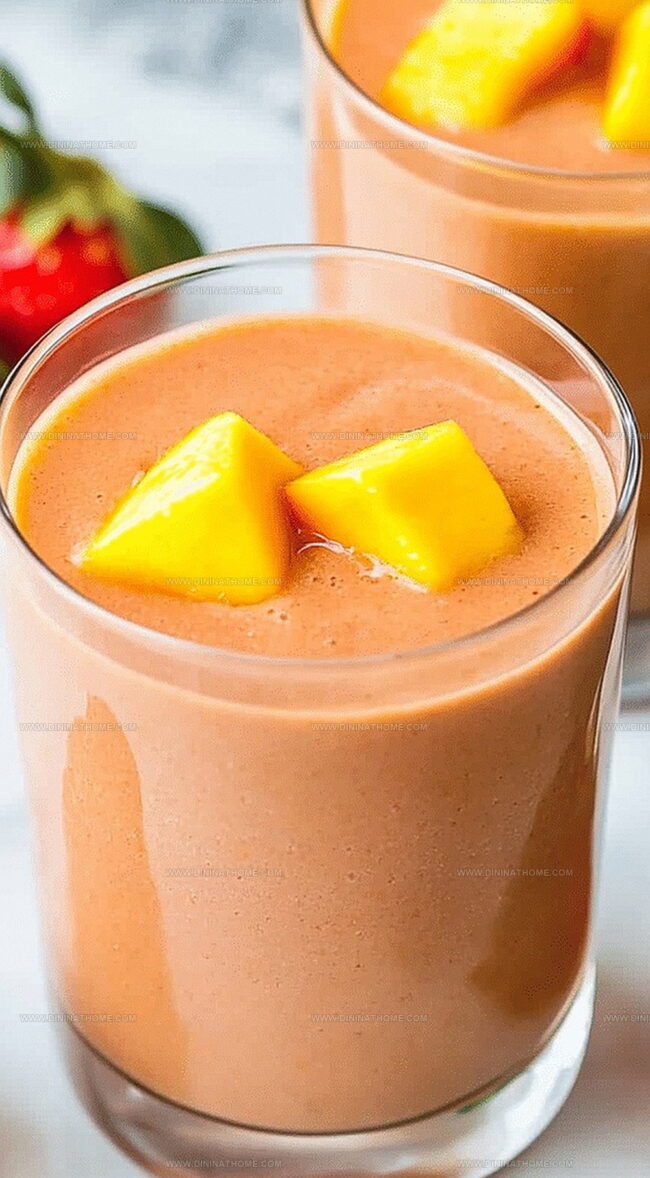

James Walker
Lead Recipe Developer & Culinary Educator
Expertise
Southern Cuisine & Farm-to-Table Cooking, Recipe Development & Testing, Culinary Education & Instruction
Education
School: Auguste Escoffier School of Culinary Arts
Program: Diploma in Culinary Arts and Operations
Focus: Comprehensive training in classical and modern culinary techniques, kitchen operations, and farm-to-table practices.
James didn’t learn cooking from a TV show, he learned it from busy kitchens, family gatherings, and long afternoons spent testing recipes the hard way.
After training at the Auguste Escoffier School of Culinary Arts, he brought his love for real, down-to-earth food to every dish he makes.
At Dining At Home, James loves building recipes that feel familiar but still have something special, like adding a twist to a classic or making a slow Sunday dinner feel brand new.
When he’s not in the kitchen, you’ll probably find him swapping garden tips at the farmers’ market or teaching his daughter how to flip pancakes without a mess (almost).